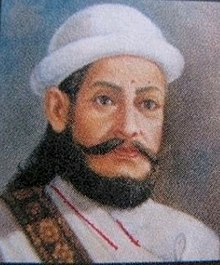
The Kingdom of Nepal was a Hindu kingdom in South Asia, formed in 1768 by the expansion of the Gorkha Kingdom, which lasted until 2008 when the kingdom became the Federal Democratic Republic of Nepal. It was also known as the Gorkha Empire, or sometimes Asal Hindustan. Founded by King Prithvi Narayan Shah, a Gorkha monarch who claimed to be of Thakuri origin from chaubisi, it existed for 240 years until the abolition of the Nepalese monarchy in 2008. During this period, Nepal was formally under the rule of the Shah dynasty, which exercised varying degrees of power during the kingdom's existence.

The Magars, also spelled Mangar and Mongar, are Tibeto-Burman ethnic group native to Nepal and Northeast India, representing 6.9% of Nepal's total population according to the 2021 Nepal census. They are one of the main Gurkha tribes.
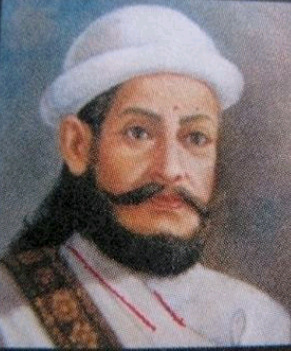
Amar Singh Thapa distinguished as Badakaji Amar Singh Thapa(Nepali: बडाकाजी अमर सिंह थापा), or Amar Singh Thapa The Elder, also known by the honorific name Bada Kaji or Budha Kaji, was a Gorkhali military general, governor and warlord in the Kingdom of Nepal. He was the overall commander of the Nepal Army in the conquest of Western Provinces and authoritative ruler of Kumaon, Garhwal in the Kingdom of Nepal. He was referred by the King of Nepal to have been deployed as Mukhtiyar of Western Provinces of Kumaon, Garhwal. He is often hailed as Living Tiger of Nepal and was posthumously regarded as one of the national heroes of Nepal, who led the Anglo-Nepalese War for the Gorkhali Army. Amarsingh Chowk Pokhara and Shree Amarsingh Model Higher Secondary School are named after Amar Singh Thapa.
Pandey, Pande, or Panday is a surname which has its roots in Sanskrit.
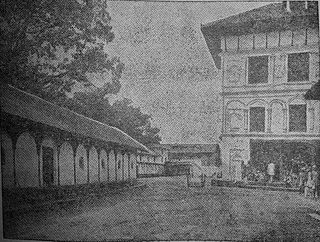
The Kot massacre took place on 14 September 1846 when then Kaji Jang Bahadur Kunwar and his brothers killed about 30-40 civil, military officers and palace guards of the Nepalese palace court including the Prime Minister of Nepal and a relative of the King, Chautariya Fateh Jung Shah and other senior-most ministers and army generals at the palace armory (Kot) of Hanuman Dhoka in Kathmandu.
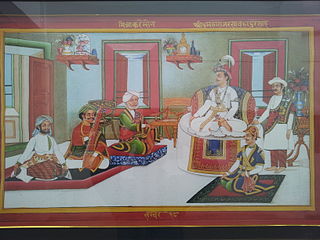
Thapa (pronunciation:) is a common surname used by Chhetri and Magar people of Nepal it is also used in India to lesser extent.
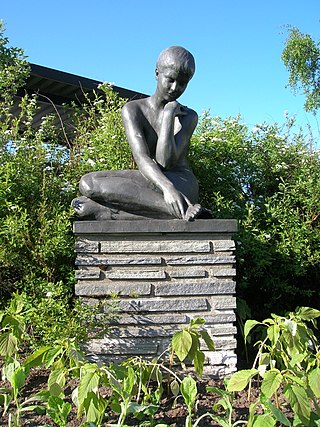
Rana is a given name and surname of multiple origins.
Gurung is a common surname among people of the Gurung Tamu ethnic group in Bhutan, Nepal and India, as well as among other groups who are not ethnically Gurung. At the time of the 2011 Nepal census, 798,658 people identified as Gurung. Gurung people predominantly live around the Annapurna Region in Manang, Mustang, Dolpo, Kaski, Lamjung, Gorkha, Parbat and Syangja districts of Nepal. They are one of the main Gurkha tribes and have been established as one of the successful indigenous communities in Nepal. Most of the Gurung people serve in the military, farming, entertainment industry, business, and politics. The origin of the Gurung people can be traced back to Qiang people located in Qinghai, China.

Kaji was a title and position used by nobility of Gorkha Kingdom (1559–1768) and Kingdom of Nepal between 1768 and 1846. Many other contemporary kingdoms used the same title for their ministers.
Thapa Kaji is a large social group of people of Jharra/Pure Chhettri caste in Nepal. Thapas of Uttrakhand And Himanchal State of India are considered as Pahari Rajput. Over a period of time, this community has spread to many parts of the world. The surname originated during the Khas Kingdom in Karnali region during middle age-it referred to a position/post of a warrior. Chhetri is considered a derivative form of the Sanskrit word Kshatriya.
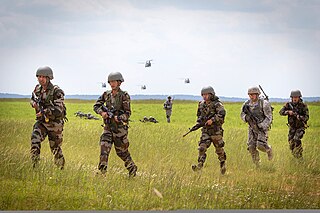
Indian Gorkhas, also known as Nepali Indians are an Indian ethno-cultural group who speak Nepali as a common language. They inhabit mainly the states of Sikkim, West Bengal, Northeast India and Uttarakhand, including their diaspora elsewhere in India and abroad. The modern term "Indian Gorkha" is used to differentiate the Nepali language Speaking Indians from Nepalis.
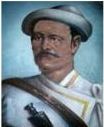
Commander in chief Abhiman Singh Rana Magar was an army General and Minister of Nepal until September 15, 1846, and the first victim of the Kot massacre of 1846. According to a government letter to then-British Resident, Major Lawrence in Kathmandu, 32 Bhardars (Nobles) were killed in the massacre catapulting Jung Bahadur, who later became Ranas, to power.

Bagale Thapa anciently known as Bagalya Thapa is a prominent clan within Khas Chhetri community. They claim Atreya Gotra. The name of the clan is also transliterated as Bagale, Bagalya, Bagaalya, Bagaliya, Bagaley, Bagaale or Bagaleya.

Ranadhoj Thapa or Ranadhwaj Thapa was the deputy Kaji to Mukhtiyar of Nepal Bhimsen Thapa.
Amar Singh Thapa, distinguished as Sanukaji Amar Singh Thapa was a Nepalese military commander, courtier, minister and regional administrator. He was born as the youngest son of one of the leading Gorkhali Bharadar Birabhadra Thapa. He led battles against many independent principalities in Nepal and a battle against Tibet. He was a Governor of Palpa and retained the post till his death in 1814.
Dalbhanjan Pande or Dalabhanjan Pande was a Nepalese minister, politician and military officer of the aristocratic Pande family. He had held ministerial positions and military offices. He jointly headed the military administration of Nepal in 1837 along with Mukhtiyar Rana Jang Pande.
The Chief of the Nepalese Army is the military position of army head of the Nepalese Army, initially known as Gorkhali Army. The Chief of the Nepalese Army had been from among the Kaji officers during the 18th century. During the reign of Bhimsen Thapa, the title of Commander-in-Chief was introduced for the first time for denoting the army chief. Later in the late 1970s, the title was changed to Chief of Army Staff (CoAS). Currently, the Chief of Army Staff is the Chief of the Nepalese Army.Gurung Magar Thakuri were thakurai/chatrapal/thakurs /kings of western Nepal.Some of chief army head of Nepal is missing.

The family of Badakaji Amar Singh Thapa was a noble Chhetri family in the central politics of Kingdom of Nepal as well as former military aristocracy of the Gorkha Kingdom. The family of Bhimsen Thapa and the family of Amar Singh Thapa were two Bagale Thapa families and part of the larger Thapa caucus at the central politics of the Kingdom of Nepal.
